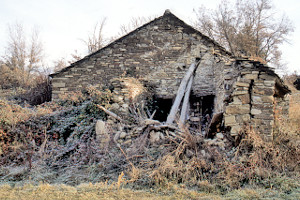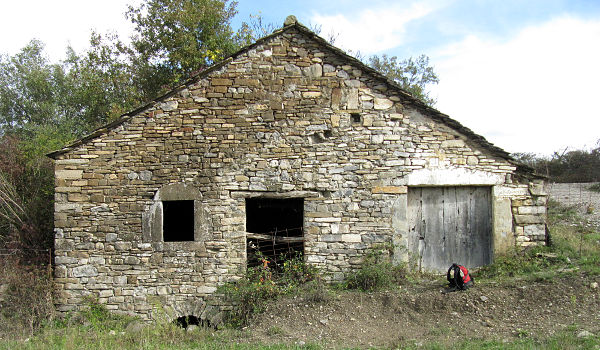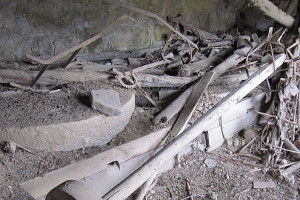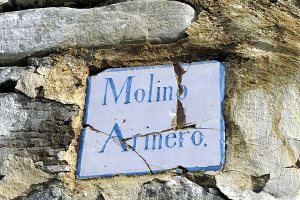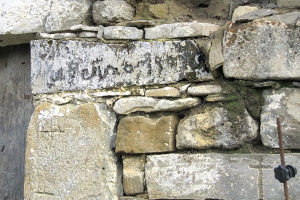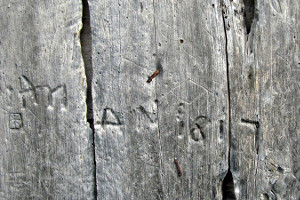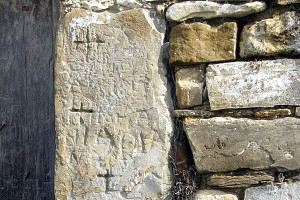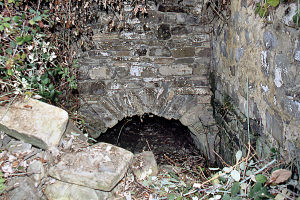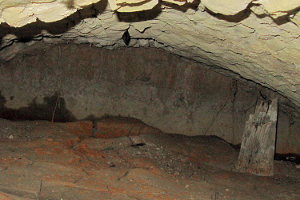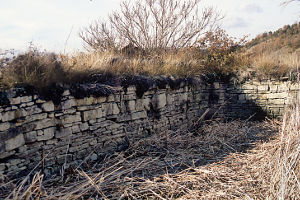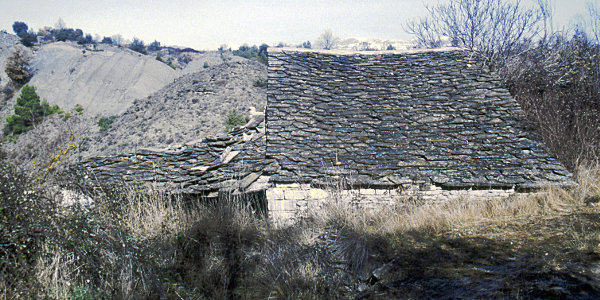Path: Introduction -
Visit the mills; catalogue - Fuendecampo

Mills in Alto Aragón - harinero
Fuendecampo

Fuendecampo is on the road from
L'Ainsa to Campo. It is signposted.
Enter the village and take the left branch: park the car on the square. Find the old path (and dirt-road) on the south-end of the village. It will bring you to the mill. You can also work your way to the river and follow the bed downstream (westward). The mill is in the center of the circle on the map right (map 212 of the Spanish Instituto Geográfico y Catastral - 2a edición 1952). The mill is humble construction not very conspicious in the eroded landscape so typical for the Río Lanata.
Enter the village and take the left branch: park the car on the square. Find the old path (and dirt-road) on the south-end of the village. It will bring you to the mill. You can also work your way to the river and follow the bed downstream (westward). The mill is in the center of the circle on the map right (map 212 of the Spanish Instituto Geográfico y Catastral - 2a edición 1952). The mill is humble construction not very conspicious in the eroded landscape so typical for the Río Lanata.
Pictures: 21.xii.1998, 06.xi.2011

